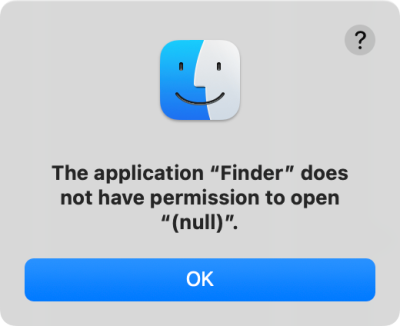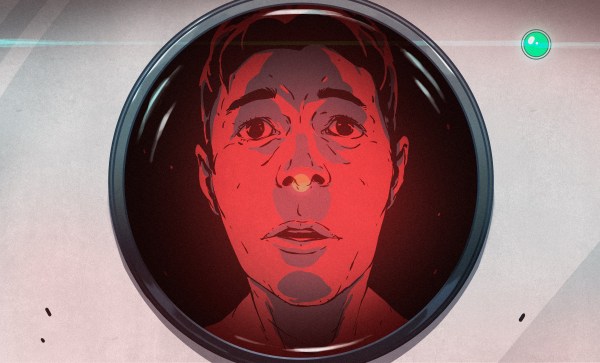Fix stuff, earn big awards? Maybe, if this idea for repair bounties takes off. The group is dubbed the FULU Foundation, for “Freedom from Unethical Limitations on Users,” and was co-founded by right-to-repair activist Kevin O’Reilly and perennial Big Tech thorn-in-the-side Louis Rossman. The operating model works a bit like the bug bounty system, but in reverse: FULU posts cash bounties on consumer-hostile products, like refrigerators that DRM their water filters or bricked thermostats. The bounty starts at $10,000, but can increase based on donations from the public. FULU will match those donations up to $10,000, potentially making a very rich pot for the person or team that fixes the problem.
drm64 Articles
Google Confirms Non-ADB APK Installs Will Require Developer Registration
After the news cycle recently exploded with the announcement that Google would require every single Android app to be from a registered and verified developer, while killing third-party app stores and sideloading in the process, Google has now tried to put out some of the fires with a new Q&A blog post and a video discussion (also embedded below).
When we first covered the news, all that was known for certain was the schedule, with the first trials beginning in October of 2025 before a larger rollout the next year. One of the main questions pertained to installing apps from sources that are not the Google Play Store. The answer here is that the only way to install an app without requiring one to go through the developer verification process is by installing the app with the Android Debug Bridge, or adb for short.
The upcoming major release of Android 16 will feature a new process called the Android Developer Verifier, which will maintain a local cache of popular verified apps. The remaining ones will require a call back to the Google mothership where the full database will be maintained. In order to be a verified Android developer you must have a Google Play account, pay the $25 fee and send Google a scan of your government-provided ID. This doesn’t mean that you cannot also distribute your app also via F-Droid, it does however mean that you need to be a registered Play Store developer, negating many of the benefits of those third-party app stores.
Although Google states that they will also introduce a ‘free developer account type’, this will only allow your app to be installed on a limited number of devices, without providing an exact number so far. Effectively this would leave having users install unsigned APKs via the adb tool as the sole way to circumvent the new system once it is fully rolled out by 2027. On an unrelated note, Google’s blog post also is soliciting feedback from the public on these changes.
Continue reading “Google Confirms Non-ADB APK Installs Will Require Developer Registration”
Cracking Abandonware DRM Like It’s 1999
As long as there have been games, there have been crackers breaking their copy protections. “Digital Rights Management” or DRM, is a phrase for copy protection coined near the end of the 1990s, and subverted shortly thereafter. But how? [Nathan Baggs] show us what it took to be a cracker in the year 2000, as the first step to get an old game going again turned out to be cracking it.
The game in question is “Michelin Rally Masters: Race of Champions” by DICE, a studio that was later subsumed by EA and is today best known as the developers of the Battlefield franchise. The game as acquired from an abandonware site does not run in a virtual machine, and after a little de-obfuscation of the code causing the crash, [Nathan] discovers LaserLock is to blame. LaserLock was a DRM tool to lock down a game to its original CD-ROM that dates all the way back to 1995. Counters to LaserLock were probably well-known in the community back in the day, but in 2025, [Nathan] walks us through attempting to crack it it from first principles.
We won’t spoil the whole assembly-poking adventure, but the journey does involve unboxing an original CD to be able to compare what’s happening when the disc is physically present compared to running from the ISO. Its tedious work and can only be partially automated. Because it did prove so involved, [Nathan]’s original aim — getting the game to work in Windows 11 — remains unfulfilled so far.
Perhaps he’d have had better luck if he’d been listening to the appropriate music. Frustrating DRM isn’t always this hard; sometimes all you needed was a paperclip. Continue reading “Cracking Abandonware DRM Like It’s 1999”
Hackaday Links: March 9, 2025
It’s been a busy week in space news, and very little of it was good. We’ll start with the one winner of the week, Firefly’s Blue Ghost Mission 1, which landed successfully on the Moon’s surface on March 2. The lander is part of NASA’s Commercial Lunar Payload Services program and carries ten scientific payloads, including a GPS/GNSS receiver that successfully tracked signals from Earth-orbiting satellites. All of the scientific payloads have completed their missions, which is good because the lander isn’t designed to withstand the long, cold lunar night only a few days away. The landing makes Firefly the first commercial outfit to successfully soft-land something on the Moon, and being the first at anything is always a big deal.
Auto-Download Your Kindle Books Before February 26th Deadline
With the news that Amazon will no longer be allowing users to download their Kindle books after February 26th, many are scrambling to download their books before it’s too late. The most up-to-date project for automating this process appears to be Amazon Kindle Bulk Downloader.
As the company that famously removed 1984 from thousands of devices without users permission, this is a move that shouldn’t be surprising, but is still disappointing, especially for those of us that were somewhat early adopters of ebooks with Kindles that don’t have a WiFi connection. (Yes, you can tell us about how you bought a Sony reader before the Kindle even came out in the comments.)
The Typescript-coded tool runs inside bun which can be installed in any of the big three OSes and even has a handy Docker image if that’s more your speed. Whether you use this tool or not, if you have any Kindle books we’d implore you to download them now.
Once you’ve downloaded those books, how about cracking the DRM either with LEGO or with software like Calibre. You could load it on a completely Open Source Reader then.
Bambu Lab Tries To Clarify Its New “Beta” Authentication Scheme
Perhaps one of the most fascinating aspects of any developing tech scandal is the way that the target company handles criticism and feedback from the community. After announcing a new authentication scheme for cloud & LAN-based operations a few days ago, Bambu Lab today posted an update that’s supposed to address said criticism and feedback. This follows the original announcement which had the 3D printer community up in arms, and quickly saw the new tool that’s supposed to provide safe and secure communications with Bambu Lab printers ripped apart to extract the security certificate and private key.
In the new blog post, the Bambu Lab spokesperson takes a few paragraphs to get to the points which the community are most concerned about, which is interoperability between tools like OrcaSlicer and Bambu Lab printers. The above graphic is what they envision it will look like, with purportedly OrcaSlicer getting a network plugin that should provide direct access, but so far the Bambu Connect app remains required. It’s also noted that this new firmware is ‘just Beta firmware’.
As the flaming wreck that’s Bambu Lab’s PR efforts keeps hurtling down the highway of public opinion, we’d be remiss to not point out that with the security certificate and private key being easily obtainable from the Bambu Connect Electron app, there is absolutely no point to any of what Bambu Lab is doing.
Apple Forces The Signing Of Applications In MacOS Sequoia 15.1

Many MacOS users are probably used by now to the annoyance that comes with unsigned applications, as they require a few extra steps to launch them. This feature is called Gatekeeper and checks for an Apple Developer ID certificate. Starting with MacOS Sequoia 15, the easy bypassing of this feature with e.g. holding Control when clicking the application icon is now no longer an option, with version 15.1 disabling ways to bypass this completely. Not unsurprisingly, this change has caught especially users of open source software like OpenSCAD by surprise, as evidenced by a range of forum posts and GitHub tickets.
The issue of having to sign applications you run on MacOS has been a longstanding point of contention, with HomeBrew applications affected and the looming threat for applications sourced from elsewhere, with OpenSCAD issue ticket #880 from 2014 covering the saga for one OSS project. Now it would seem that to distribute MacOS software you need to have an Apple Developer Program membership, costing $99/year.
So far it appears that this forcing is deliberate on Apple’s side, with the FOSS community still sorting through possible workarounds and the full impact.
Thanks to [Robert Piston] for the tip.
















